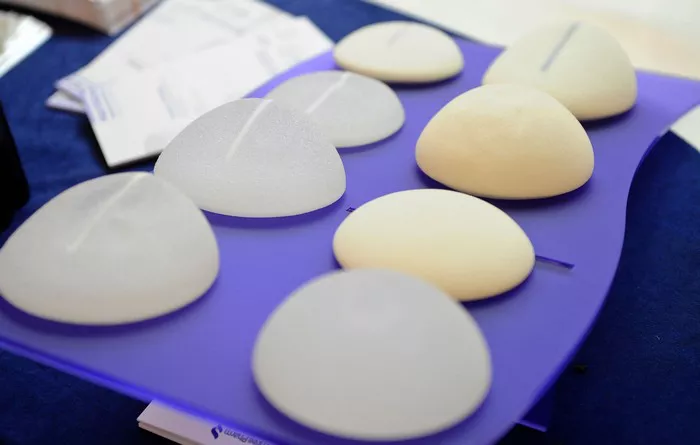When considering breast augmentation surgery, one of the most important factors to consider is the safety of breast implants. With advancements in technology and surgical techniques, there are several types of breast implants available on the market. In this article, we will explore different types of breast implants and discuss their safety profiles to help you make an informed decision.
Understanding Breast Implant Types
There are primarily two types of breast implants used in breast augmentation surgery: saline-filled implants and silicone gel-filled implants. Each type has its own unique characteristics and safety considerations.
Saline-Filled Implants
Saline-filled implants consist of a silicone shell that is filled with a sterile saline solution (saltwater) during the surgery. These implants have been widely used for many years and have a long history of safety and effectiveness.
Safety Profile: Saline-filled implants are considered safe because saline is a biocompatible substance that poses no health risks if the implant were to rupture or leak. In the event of rupture, the saline solution is harmlessly absorbed by the body and can be easily detected as the implant deflates, allowing for prompt medical attention.
Silicone Gel-Filled Implants
Silicone gel-filled implants consist of a silicone shell filled with a cohesive silicone gel. These implants have gained popularity due to their natural look and feel.
Safety Profile: Silicone gel-filled implants have undergone extensive testing and research to ensure their safety. They are approved by regulatory authorities such as the U.S. Food and Drug Administration (FDA). The silicone gel used in these implants is highly cohesive, which means that it maintains its shape even if the implant shell were to rupture. This reduces the risk of gel migration and makes detection of rupture more challenging. Regular monitoring, such as imaging (e.g., MRI), may be recommended to assess the condition of silicone gel-filled implants.
Structured Saline-Filled and Cohesive Gel Implants
In addition to traditional saline-filled and silicone gel-filled implants, there are newer options available that incorporate advanced design features to enhance safety and aesthetic outcomes.
Structured Saline-Filled Implants: Structured saline-filled implants are a variation of saline implants that feature an internal structure to provide a more natural feel and minimize rippling. The internal structure helps the saline solution distribute more evenly within the implant, resulting in improved shape and contour.
Cohesive Gel Implants: Cohesive gel implants, also known as “gummy bear” implants, contain a highly cohesive silicone gel that is thicker and more solid in consistency compared to traditional silicone gel implants. These implants are designed to retain their shape even if the implant shell were to rupture.
Safety Considerations for Breast Implants
When considering the safety of breast implants, it is important to consider both short-term and long-term factors. Here are some key considerations:
Regulatory Approval: Ensure that the breast implants you choose have received regulatory approval from reputable authorities, such as the FDA. These approvals indicate that the implants have met rigorous safety and efficacy standards.
Manufacturer Reputation: Choose breast implants from reputable manufacturers with a history of producing high-quality products. Look for companies that have conducted extensive research, clinical trials, and follow-up studies to ensure the safety and longevity of their implants.
Surgeon Experience and Skill: The experience and skill of your plastic surgeon play a crucial role in the safety of your breast augmentation procedure. Choose a board-certified plastic surgeon who has extensive experience in breast augmentation surgeries and a track record of successful outcomes.
Regular Monitoring and Follow-Up: Regular monitoring of your breast implants is important to ensure their ongoing safety and detect any potential issues. Follow your surgeon’s recommendations for regular check-ups, including imaging studies if necessary, to assess the condition of your implants.
Awareness of Potential Complications: While breast implants are generally safe, it is essential to be aware of potential complications, such as capsular contracture, implant rupture, or implant malposition. Understanding the signs and symptoms of these complications and promptly seeking medical attention can help address any concerns in a timely manner.
Consultation with a Plastic Surgeon
To determine the safest type of breast implant for your specific needs, it is crucial to consult with a board-certified plastic surgeon. They will evaluate your individual factors, such as breast anatomy, desired outcomes, and personal preferences, to recommend the most suitable implant option.
During your consultation, discuss the safety profiles of different implant types, potential risks and complications, and the surgeon’s experience with each type. Your surgeon will provide detailed information and guide you in making an informed decision based on your unique circumstances and goals.
Conclusion
The safety of breast implants is a top priority for individuals considering breast augmentation surgery. Saline-filled implants and silicone gel-filled implants have a long history of safety and are widely used. Structured saline-filled implants and cohesive gel implants offer additional options with enhanced features. It is important to consider regulatory approvals, manufacturer reputation, surgeon expertise, regular monitoring, and awareness of potential complications when assessing the safety of breast implants. Consulting with a board-certified plastic surgeon is crucial to receiving personalized advice and selecting the safest breast implant option that aligns with your goals and preferences.

